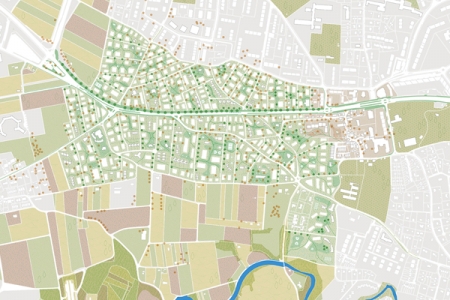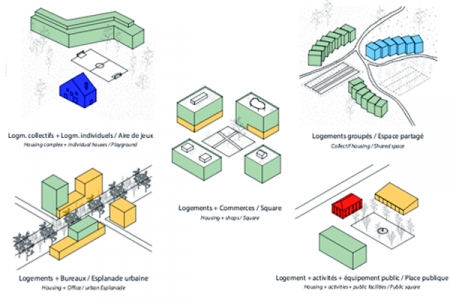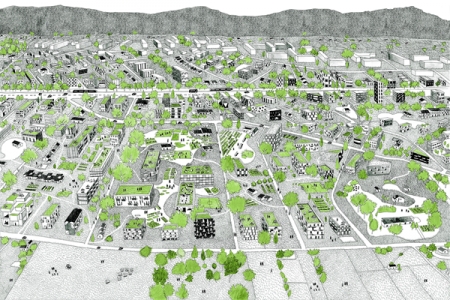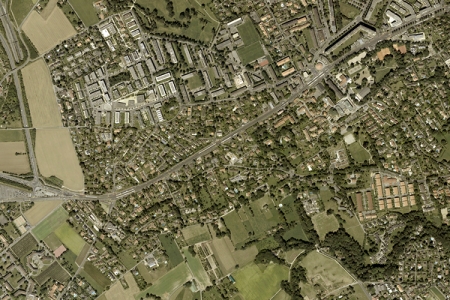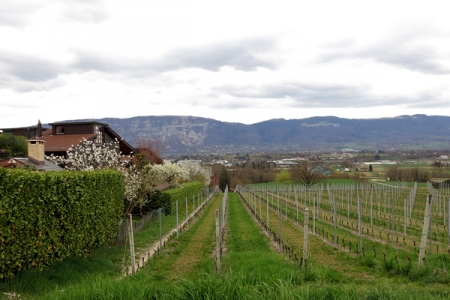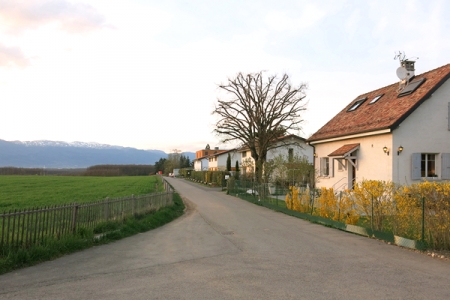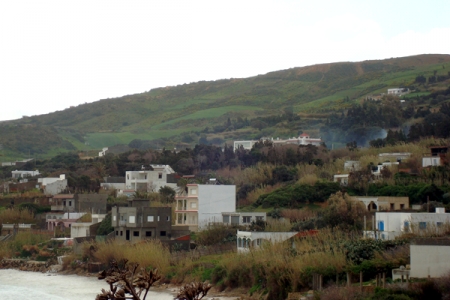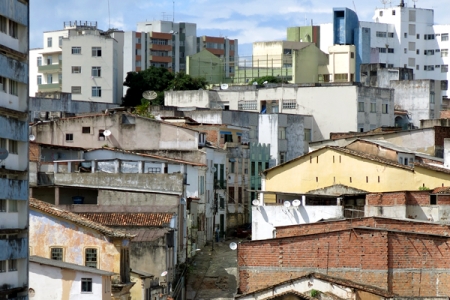La ville intermédiaire
Genève (CH) – Winner
TEAM DATA
Team Representative: Yony Santos (CH) – architect; Associate: Mounir Ayoub (CH) – architect
Contributors: Nuria Fernandez (ES), Vanessa Lacaille (FR) – architects
1 rue Joseph-Pasquier, 1203 Genève – Suisse
+41 78 917 2010 – mail@yonysantos.ch – yonysantos.ch
See the complete listing of portraits here
See the site page here

M. Ayoub, N. Fernández, V. Lacaille, Y. Santos © E. Murcia Artengo
INTERVIEW
Click on the images to enlarge
1. How did you form the team for the competition?
We first met at the Accademia di architettura di Mendrisio in Ticino in 2003. We have been living and working in Geneva for the past 5 years. The European13 site as part of the metropolitan area of Geneva was a great opportunity for us to put our convictions into practice on the very territory of our daily work and life.
2. How do you define the main issue of your project, and how did you answer on this session main topic: Adaptability through Self-Organization, Sharing and/or Project (Process)?
Fundamentally we start from the hypothesis that every inhabitant has a right to the landscape and to urbanity. To begin with, we observe and analyse a given territory in detail. Then we elaborate and submit a participative work process implying both the inhabitants of the territory and the different public and private stakeholders, the objective being the elaboration of a charter defining the shared rights underlying the mutation of this territory. Finally, this charter will guarantee the fundamental rights to the landscape and to urbanity. What we propose is a new model of circular governance, and not one of preconceived planning.
3. How did this issue and the questions raised by the site mutation meet?
In the case of Geneva, the densification of villa zones is an opportunity for urban development. The project site, a former agricultural territory, is a low-density neighbourhood of individual homes overlapping three municipalities of the Geneva metropolitan area. Thanks to its good access to public transport and the advantages of the exceptional geographical location between two waterways offering a beautiful view on the surrounding mountains, the site offers both rural advantages and proximity to downtown life. Current case-to-case transactions in real estate have proven insufficient to improve the density of the neighbourhood. What we propose is a project for “the intermediary city” – a participative procedure consisting in elaborating together with the inhabitants a charter applying to this specific territory. The principles of the charter will positively impact the neighbourhood densification.
4. Have you treated this issue previously? What were the reference projects that inspired yours?
Nowadays the contemporary territory can no longer be envisaged with reference to the existing city as it is today. This kind of human settlement belongs to the past. High-density neighbourhoods characterized by auto-construction, but also diffuse and dispersed settlements make the territory an environment of relationships. The right to the landscape and the right to urbanity are exercised through an intense process of sharing and negotiating natural landscape and public property. The territory as shared environment undergoes a permanent struggle for the right to the landscape and the right to urbanity. Henceforth, form follows sharing.
5. Today –at the era of economic crisis and sustainability– the urban-architectural project should reconsider its production method in time; how did you integrate this issue in your project?
The existing models of urban development have shown their limits because of their inefficiency and the opposition of the inhabitants. It is a matter of territorial governance. Our project defines itself as a participative process of transformation of an inhabited environment, not a matter of preconceived urban planning. We propose a new model of governance implying all stakeholders in a participative process of elaborating a common charter for the transformation of a given territory.
6. Is it the first time you have been awarded a prize at Europan? How could this help you in your professional career?
Yes, this is the first time we have had the opportunity to implement our project on a specific site. As to the question of densification of villa zones in the metropolitan area of Geneva, we propose an operational project adapted to the local issues and specificities based on a new model of governance. Be it in Geneva or other metropolitan areas in Switzerland or abroad, everything must be done to implement this new model of territorial governance. Because the city as it develops today is no longer up to the contemporary realities of the territory.
